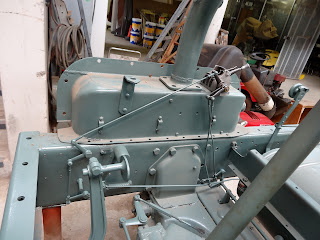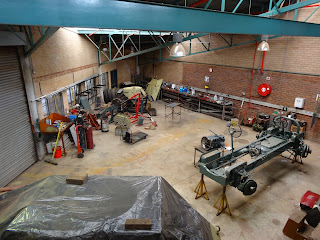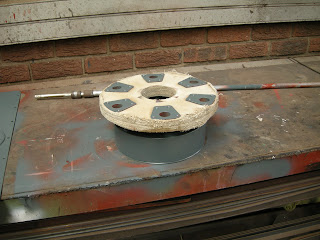Another batch of photos out of sequence, here is the hull before the final exterior colour was painted on.
The two drivers visors before sandblasting.
The brake drum backing plates.
Steering boxes and floor panel.
This is the main drivers floor panel, the embossed plate is aluminium. This is unfortunately all we have of the seats which will have to be manufactured.
This is the turret race/rack.
Another floor plate after sandblasting.
This plate is located over the pedal cluster.
Another floor plate with brackets for the seat.
This is the lower turret assembly looking from below, the turret race is machined on the underside of this.
The ball bearings were horribly rusted 22mm diameter balls, these will be replaced.
The ball bearings had to be pounded out of the cage with quite some effort.


















































